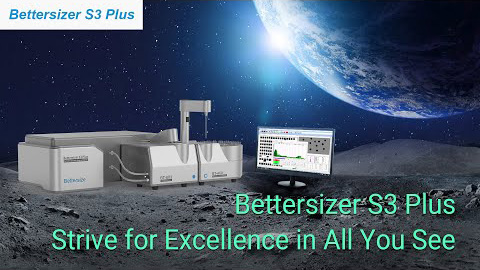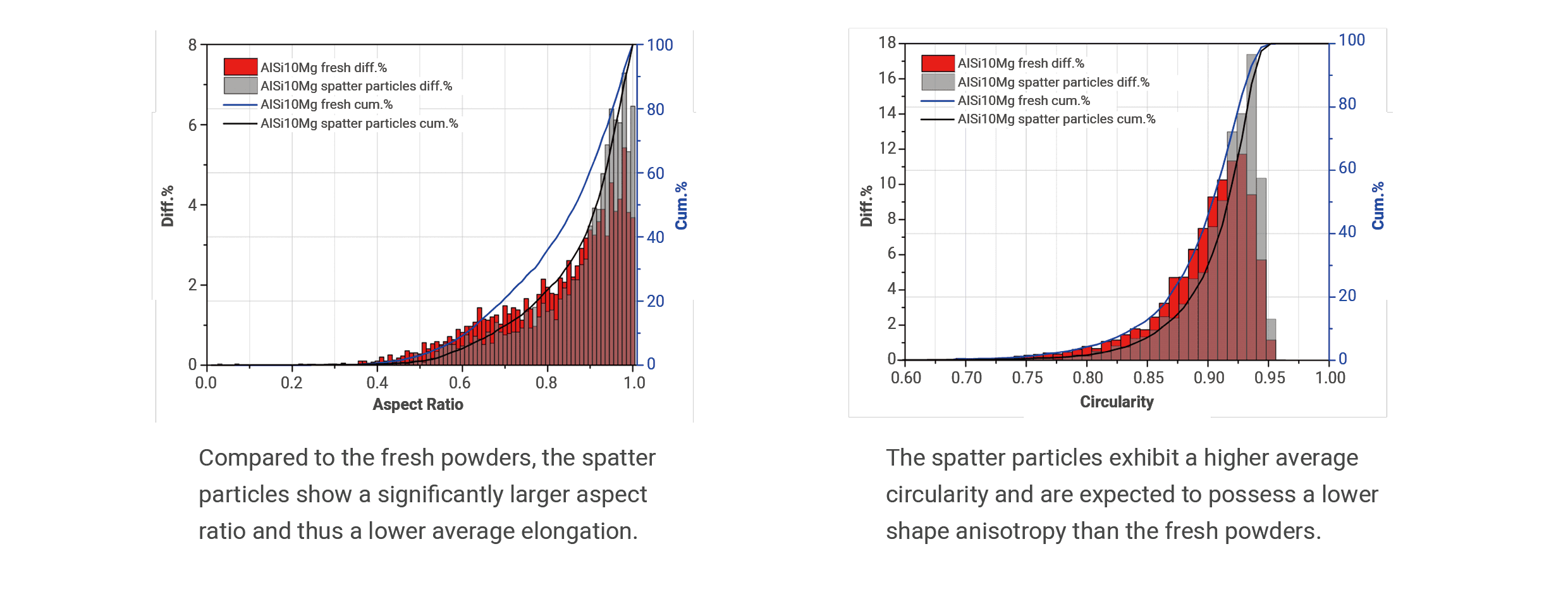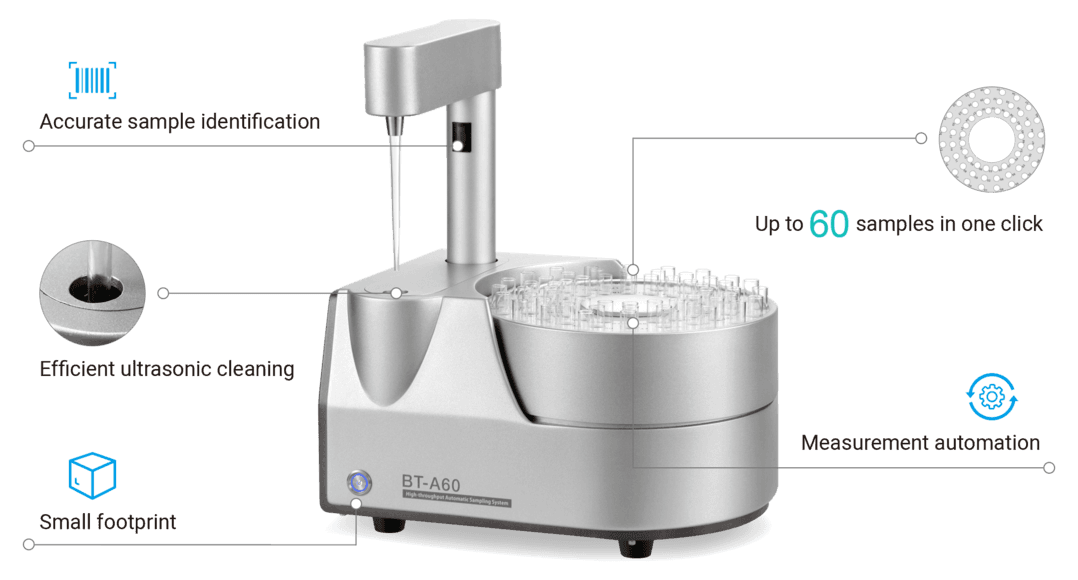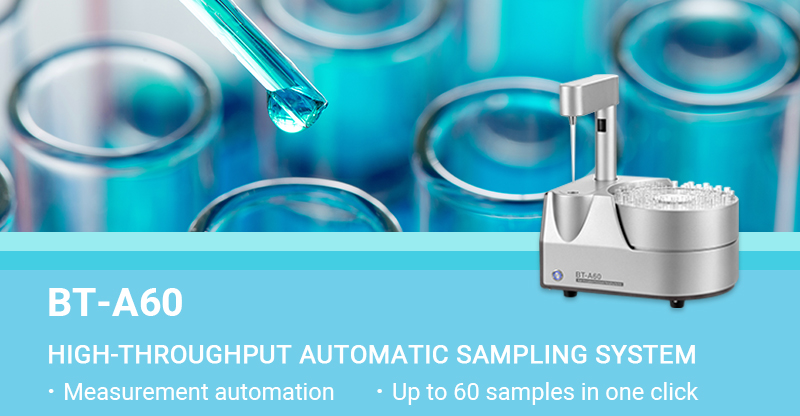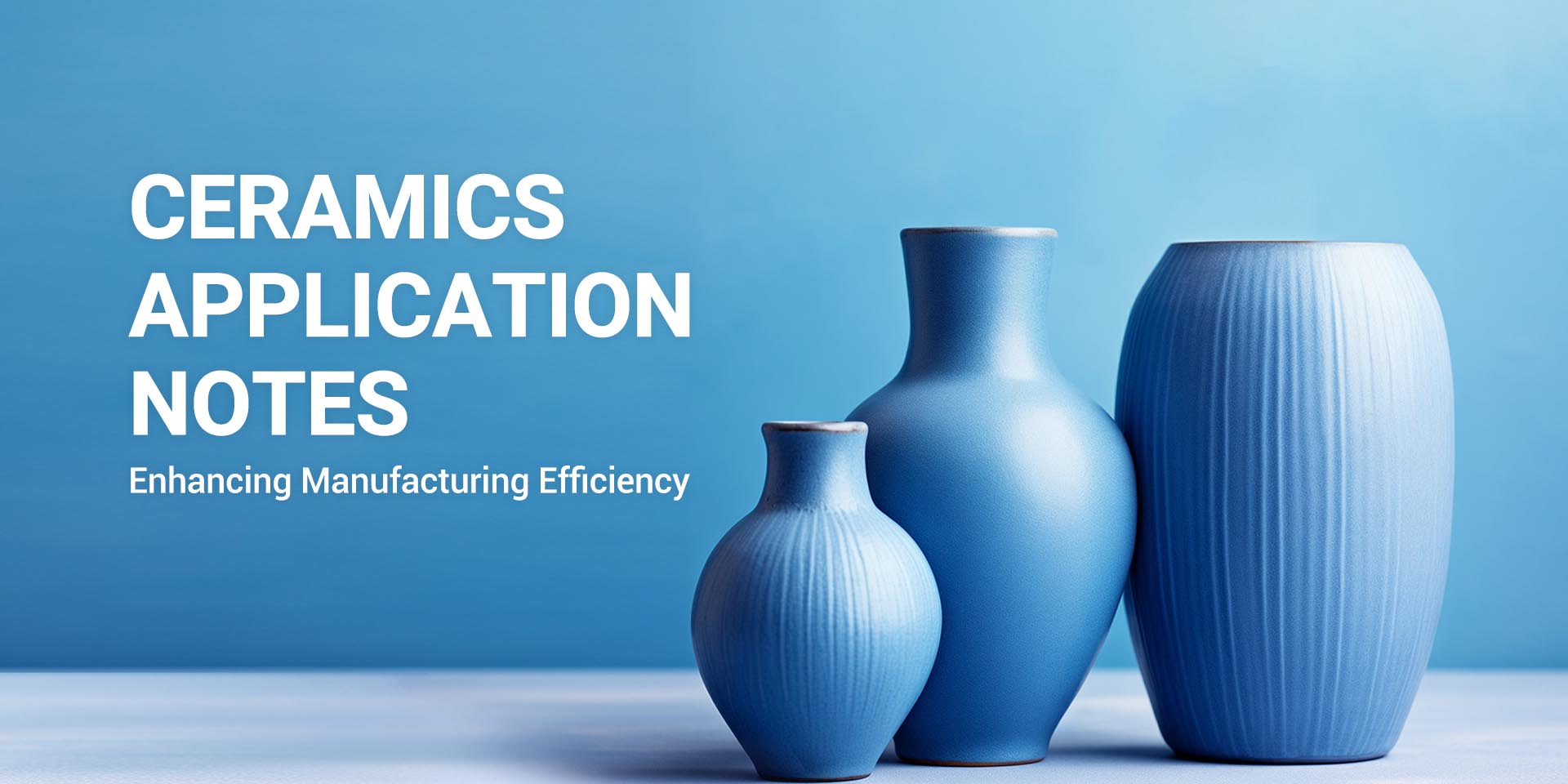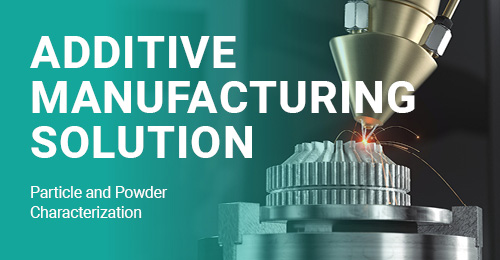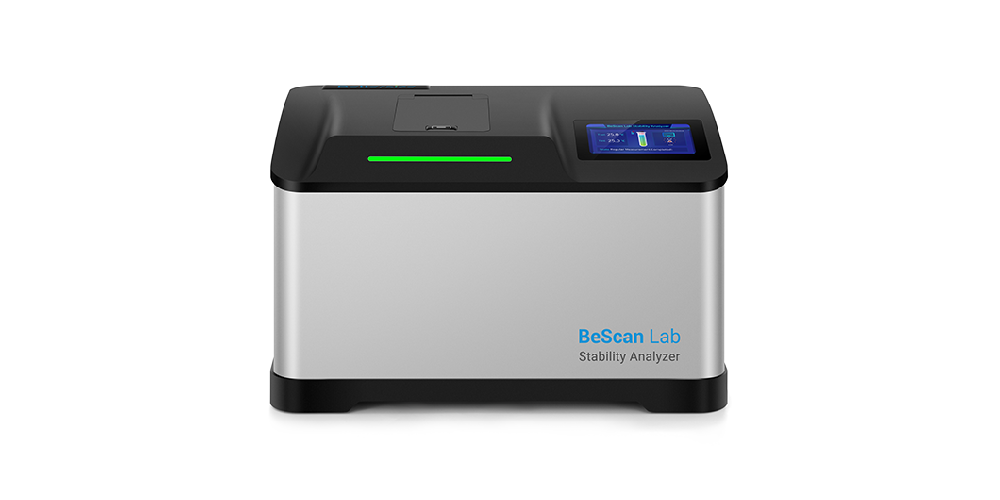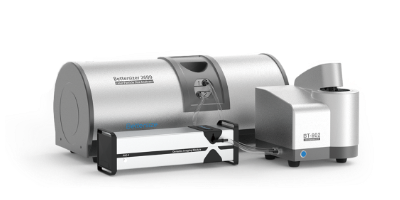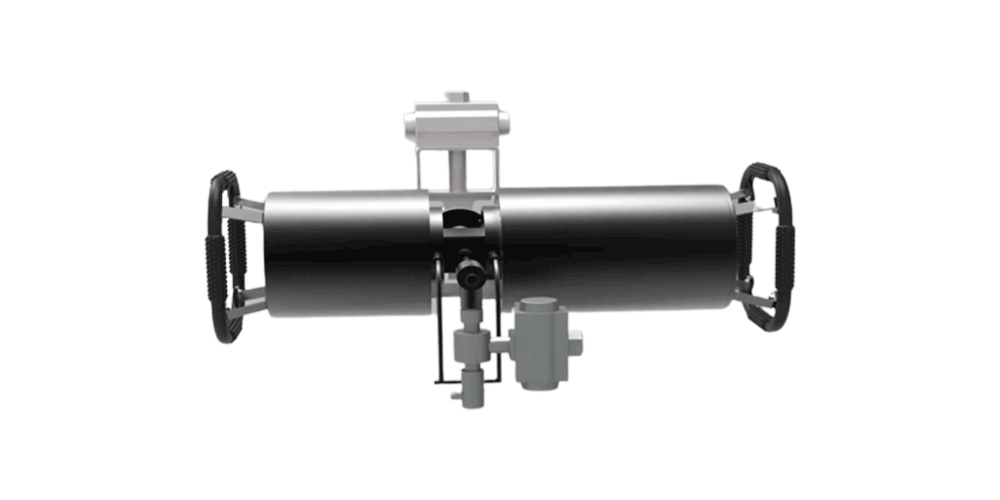Bettersizer S3 Plus
Der Bettersizer S3 Plus kombiniert Laserbeugung und dynamische Bildanalyse in einem Gerät. Er kann die Größe und Form von Partikeln von 0,01 μm bis 3500 μm messen. Seine außergewöhnliche Empfindlichkeit für ultrafeine oder übergroße Partikel und seine unübertroffene Auflösung machen ihn zum leistungsfähigsten Größen- und Formanalysator für begeisterte Forscher, die wissenschaftliche Spitzenforschung betreiben.
Funktionen und Vorteile
- ● Messbereich: 0,01 - 3.500μm (Lasersystem), 2 - 3.500μm (Bildsystem)
- ● Kombination von Laserbeugung und dynamischer Bildanalyse in einem Gerät, um gleichzeitig Ergebnisse zu Größe und Form zu erhalten
- ● Das patentierte DLOI-System (Dual Lenses & Oblique Incidence) ermöglicht die Messung von ultrafeinen Partikeln bis zu 0,01 um
- ● Die Dual-Kamera-Bildgebungstechnologie kann Partikelbilder in Echtzeit anzeigen und übergroße Partikel bis zu 3500 um erkennen
- ● Die Brechungsindexmessung bestimmt den Brechungsindex von unbekannten Proben und verbessert die Zuverlässigkeit der Ergebnisse
- ● Einhaltung von 21 CFR Teil 11, ISO 13320, USP <429>, CE
Video
Bettersizer S3 Plus | Strive for Excellence in All You See 
BT-A60 Autosampler | Demo 
How to Install and Operate Bettersizer S3 Plus 
Demo of Bettersizer S3 Plus 2-In-1 Particle Size and Shape Analyzer 
Fundamentals of Bettersizer S3 Plus 2-In-1 Particle Size and Shape Analyzer 
Bettersizer S3 Plus | Particle Size and Shape Analyzer 
Bettersizer S3 Plus Overview | Strive for Excellence in All You See 
Überblick
1. Bettersizer S3 Plus Partikelgrößen- und Formanalysator Übersicht
Der Bettersizer S3 Plus ist ein Laserbeugungs-Partikelgrößen- und Formanalysator, der mit zwei Hochgeschwindigkeits-CCD-Kameras (0,5- und 10-fache Vergrößerung) ausgestattet ist, um Bilder der gemessenen Probe aufzunehmen. Während der Messung werden die im gewünschten Medium dispergierten Partikel durch zwei Probenzellen gepumpt. In der ersten Zelle beleuchtet kurzwelliges Laserlicht (532 nm) die Partikel und wird gestreut. Die 96 Detektoren erfassen optische Signale in einem Winkelbereich von 0,02° - 165°. Die CCD-Kameras nehmen kontinuierlich Bilder der Partikel durch die zweite Probenzelle auf, um Forminformationen im Bereich von 2 bis 3500 µm zu liefern .
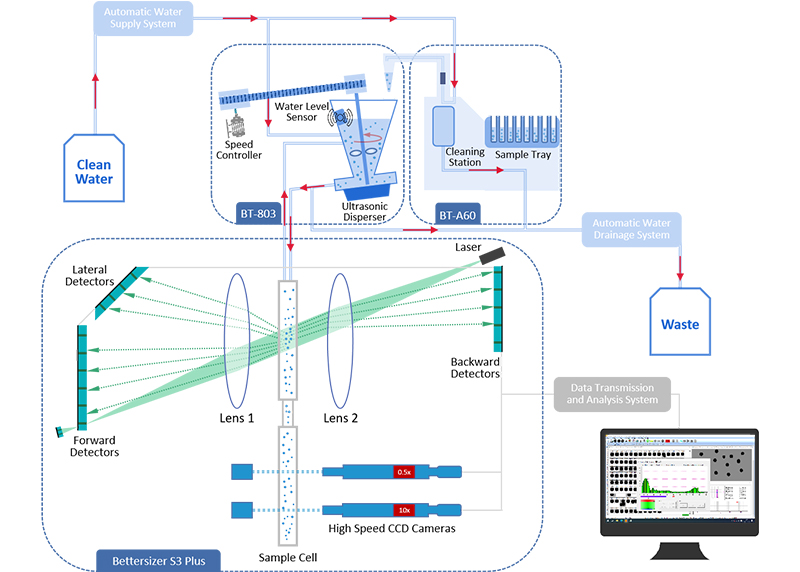
2. Patentiertes DLOI-System (Dual Lenses Oblique Incidence): Laserbeugung
Merkmale und Vorteile:
- Misst ultrafeine Partikel genau mit dem großen Winkelbereich (0,02 - 165°) mit 96 Detektoren
- Robustes optisches System mit hervorragender Auflösung durch das Design mit zwei Linsen
- Ein einziges kurzwelliges Lasersystem (532 nm) liefert ein kontinuierliches Streuspektrum mit einer einheitlichen Wellenlänge
- Keine Stabilisierungs- und Vorwärmzeit mit einer Festkörperlichtquelle erforderlich


3. Zwei-Kamera-System: Dynamische Bildanalyse
Mit der dynamischen Bildanalyse können Sie Ihr Verständnis von Materialien durch umfassende Form- oder morphologische Informationen verbessern, die unabhängig von der Laserbeugung sind. Einzelne Partikel mit spezifischen geometrischen Eigenschaften, wie z. B. Agglomerate, zerkleinerte Partikel und Fremdpartikel, können mit dem Dual-Kamera-System effektiv verfolgt werden.
Merkmale und Vorteile:
- 0,5- und 10-fach-Kameras - fotografieren einen extrem großen Größenbereich von Partikeln
- Hochgeschwindigkeits-Stroboskoplicht - Aufnahme von bis zu 10.000 Partikelbildern in 60 Sekunden, für authentische Formergebnisse
- Geeignet für die Messung heterogener Proben mit unbekannten optischen Eigenschaften
Der Bettersizer S3 Plus integriert die Laserbeugung und die dynamische Bildanalyse in einem Gerät, um gleichzeitig die Partikelgröße, die Größenverteilung und die Partikelform über einen großen dynamischen Bereich zu bestimmen. Durch diese Kombination können Anwender ein tieferes Verständnis des Materialverhaltens erlangen, um den Prozess der Fehlersuche und Methodenentwicklung zu beschleunigen.
- DLOI-System - misst präzise ultrafeine Partikel bis zu 0,01 μm
- Dual-Kamera-Imaging-System - detektiert effizient übergroße Partikel bis zu 3.500 μm
- 2-in-1-System - liefert gleichzeitig Ergebnisse zu Partikelgröße und -form
- Kurze Zeit bis zum Ergebnis - liefert Ergebnisse innerhalb von 10 Sekunden
5. Anwendungen
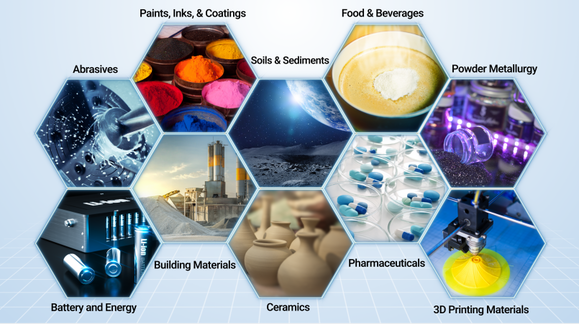

Citations
- Bettersizer 2600
Functional redundancy as an indicator for evaluating functional diversity of macrobenthos under the mussel raft farm near Gouqi Island
DOI: 10.1016/j.aquaculture.2023.740024 Read ArticleZhejiang Ocean University | 2024Biological traits analysis (BTA) helps to evaluate the effects of different environmental variables on the traits-based functional composition of macrobenthos. However, research on functional traits of macrobenthos under mussel farming is limited. We investigated the spatial and temporal response of the benthic system in terms of taxonomic and functional diversity to environmental variables of farming and natural stressors resulting from suspended mussel farming near Gouqi Island of eastern China Sea. The functional traits of macrobenthic assemblages under mussel farming were characterized by “medium adult body size”, “vermiform body form”, “high flexibility”, “infauna”, “semi-motile”, “gonochoristic”, “surface deposit-feeders”, “carnivores”, “semi-motile burrowers”, and “tube-dwellers”. Functional redundancy was stable in response to mussel farming stresses among seasons, whereas species diversity showed efficient to evaluate natural variables. Functional diversity was significantly affected by farming stressors rather than natural variables, Further analysis using multivariate methods together with continuous monitoring were highlighted to evaluate the impacts of mussel farming. Our results reinforce the importance of macrobenthic species and functional traits analysis to evaluate human stresses driven impacts in offshore ecosystems. By analysing the environmental variables with different sources, independently, we concluded the main effects of human pressures on macrobenthic community. Such distinction could be particularly effective to isolate variable environmental descriptors and evaluate their effects on functional diversity, making the current approach promising for the evaluation of ecological effects of anthropogenic stressors in aquaculture areas. - Bettersizer 2600
Degradation characteristics and utilization strategies of a covalent bonded resin-based solid amine during capturing CO2 from flue gas
DOI: 10.1016/j.seppur.2023.125621 Read ArticleChina University of Petroleum | 2024In this study, various types of degradation as well as attrition which are possibly encountered in a circulating fluidized bed temperature swing adsorption (CFB-TSA) process, were conducted experimentally to evaluate the stability of a resin-based solid amine sorbent. Other characterizations methods, such as elemental analysis (EA), Fourier transform infrared spectroscopy (FTIR) etc. were applied to further reveal the degradation mechanisms. The results showed that thermal degradation occurs from 140–160 °C due to the decomposition of amine group. The CO2-induced degradation occurs from a higher temperature of 160–180 °C accompanied by the production of urea. Hydrothermal stability is good below 130 °C, but the ionic impurities in steam crystalized on particle surface can accelerate the degradation. Oxidative degradation is the most harmful, which starts at a lower temperature of 70–80 °C with the formation of aldehyde. The existence of H2O in atmosphere can alleviate the oxidative and CO2-induced degradations. The employed sorbent has a very low attrition index of 0.05, which is 1–2 orders lower than typical commercial fluidized bed catalysts. Based on the results of stability evaluation, some design suggestions for proper utilization of this sorbent or other similar resin-based sorbents have been provided in an industrial CFB-TSA process.
- Bettersizer 2600
De-branching of starch molecules enhanced the complexation with chitosan and its potential utilization for delivering hydrophobic compounds
DOI: 10.1016/j.foodhyd.2023.109498 Read ArticleShihezi University | 2024The current study aimed to prepare the complexes between debranched-waxy corn starch and chitosan polymers (DBS-CS), and then investigated their corresponding structural characteristics, rheological property and potent application in Pickering emulsion. The results indicated that the existence of chitosan significantly inhibited starch short-range molecular rearrangement for all DBS-CS samples, which was manipulated by both debranching treatment and chitosan content. Interestingly, this is the first study to reveal that the outstanding peak at 1.8 ppm in 1H NMR spectrum for sample DBS-CS was gradually shifted towards a lower-field region following an increased chitosan content. Moreover, the debranching treatment shifted the crystallinity pattern from A-type to B-type and the relative crystallinity of DBS-CS decreased gradually with the increased content of CS. All samples had a pseudoplastic fluid and shear-thinning behavior with an enhanced shear resistance following the complexation. The DBS-CS was applied in a Pickering emulsion for showing a greater emulsifying stability and a lower gel strength than native NS-CS prepared emulsion. Importantly, the encapsulation ability of curcumin in the DBS-CS emulsion was significantly improved, followed by an increase of 15.45% for its corresponding bioavailability compared to the control. Therefore, this study might highlight a potential carrier for delivering the bioactive substances in a green pattern. - Bettersizer 2600
Heat-induced aggregation behavior of wheat gluten after adding citrus pectin with different esterification degree
DOI: 10.1016/j.foodhyd.2023.109420 Read ArticleGansu Agricultural University | 2024Wheat gluten aggregation during heat treatment is beneficial to the final quality of gluten-based products. Exogenous pectin can affect gluten aggregation. However, the effect of pectin with different degrees of esterification on the heat-induced aggregation behavior of gluten and its possible mechanism are still unclear. Thus, the heat-induced aggregation behavior of gluten after adding pectin with different esterification degree was studied in this study. When the temperature was raised from 25 °C to 95 °C, pectin affected gluten aggregation and was related to the degree of esterification. Specifically, the results of rheological properties and particle size indicated that low-ester pectin improved the viscoelasticity of gluten and promoted gluten aggregation. Thermal properties revealed that enthalpy of gluten added with low-ester pectin (37%) increased from 92.96 J/g to 95.40 J/g during heating process. Structurally, the fluorescence intensity and surface hydrophobicity of gluten added with low-ester pectin (37%) were lower than those added with high-ester pectin (73%). In addition, low-ester pectin (37%) significantly increased the disulfide bond content (from 15.31 μmol/g to 18.06 μmol/g) and maintained β-sheet content of gluten compared with gluten alone at 95 °C, indicating that low-ester pectin was more likely to induce gluten aggregation. However, scanning electron microscope showed that the gluten added with low-ester pectin (46%) exhibited a denser network structure at 95 °C than that added with low-ester pectin (37%). These results will provide a theoretical base for the regulation of gluten aggregation and the quality of gluten-based products by pectin with different esterification degree.
- 1
- 2
- 3
- 4
- 5
- 6
- 84
Ausgewählte Ressourcen
Referenzen


Verwandte Partikelgrößenanalysatoren
-
BeScan Lab
Stability Analyzer
Particle size ranges from 10 nm to 1 mm
Volume fraction up to 95%
Compliance with ISO/TR 18811, 13097, 21357, 22107
-
Bettersizer 2600
Laser Diffraction Particle Size Analyzer
Measurement range: 0.02 - 2,600μm (Wet dispersion)
Measurement range: 0.1 - 2,600μm (Dry dispersion)
Measurement range: 2 - 3,500μm (dynamic imaging)
-
Bettersizer ST
One-stop Particle Size Analyzer
Dispersion type: Wet
Measurement range: 0.1 - 1,000µm
Repeatability: ≤1% variation
-
BeVision D2
Dynamic Image Analyzer
Dispersion type: Dry
Measurement range: 30 - 10,000μm
Technology: Dynamic Image Analysis
-
BeVision M1
Automated Static Image Analyzer
Dispersion type: Dry
Measurement range: 1 - 10,000μm
Technology: Automated Static Image Analysis
-
BeVision S1
Classical and Versatile Static Image Analyzer
Dispersion type: Dry & Wet
Measurement range: 1 - 3,000μm
Technology: Static Image Analysis
-
BT-Online1
Online Particle Size Analyzer
Dispersion type: Dry
Measurement range: 0.1 - 1,000μm
Accuracy: ≤1% (D50 of certified reference material)






